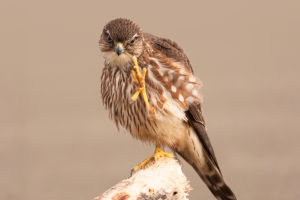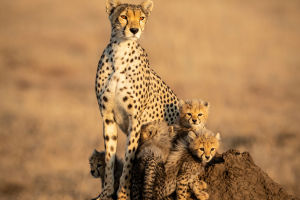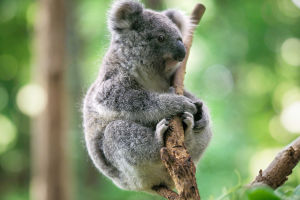Have you ever imagined a creature that looks like a mix of a horse, a deer, a camel, and a donkey? That’s not from a fairy tale—it’s the Père David's deer, or as we often call it in China, the “milu” or “Four-Unlike” deer.
Its story is even more incredible than its appearance, so let’s take a journey together into the wetlands of China to meet this rare and remarkable animal.
What exactly is Père David’s deer?
Père David’s deer (Elaphurus davidianus) is a large, wetland-loving deer species native to China. It's called “Four-Unlike” because of its strange combination of features: a horse-like head, antlers like a deer, a camel-like neck (or ox-like hooves, depending on who you ask), and a long tail like a donkey. Adults can grow up to 2.2 meters long and weigh as much as 200 kilograms.
Their summer coat is a reddish-brown, but in winter, it thickens and turns dark gray. The males grow antlers—sometimes twice a year—depending on the season, and their hooves are wide and strong, helping them walk in soft, swampy ground.
Where can we see them today?
Though the Père David’s deer went extinct in the wild over a century ago, they’ve made a remarkable comeback. Today, we can see them in special protected areas in China:
1. Dafeng Milu National Nature Reserve (Jiangsu Province): This is one of the best places to see milu in a natural wetland habitat. It’s open year-round, with an entrance fee of around $6 (40 RMB). The best time to visit is from April to October when the weather is warm and the deer are more active.
2. Beijing Nanhaizi Milu Park: Located just 15 miles south of Beijing’s city center, this park offers a mix of education and wildlife. Entry is free, and it’s great for a half-day family trip.
3. Shishou Milu Reserve (Hubei Province): A lesser-known spot, perfect for travelers looking for a quiet and close-up view.
How did they nearly disappear?
Once widespread in East Asia, milu deer saw their numbers drop due to climate changes and human expansion. By the end of the Han dynasty, they had already disappeared from most areas. The last herd lived in the imperial hunting park near Beijing. In the 1800s, a flood allowed some to escape, and locals, unaware of their rarity, hunted them. The species became extinct in the wild.
How did they come back to life?
Here’s where the story takes a twist. A French missionary named Père David saw the deer in the royal park and helped bring some to Europe. Over time, zoos and estates in England bred them successfully. In the 1980s, as conservation awareness grew, some were brought back to China.
Today, global numbers have reached around 5,000, with over 3,000 living in China. Their survival is now a powerful example of how international cooperation and conservation can work miracles.
Why are Père David’s deer important?
They’re more than just a strange-looking animal. Père David’s deer symbolize the importance of biodiversity, wetland conservation, and global teamwork. They also serve as a living lesson—once thought gone forever, yet brought back through human effort and care.
The wetlands they live in are also protected ecosystems, home to birds, fish, and other rare animals. Visiting these reserves supports local conservation and raises awareness about nature’s delicate balance.
Travel tips for seeing them in person
- Best season: Spring and early summer are ideal. You’ll catch sight of young deer and enjoy pleasant weather.
- Bring binoculars: While they can come close, it’s always fun to observe from a distance.
- Avoid feeding them: Even though they might approach, it’s best to let them stay wild and healthy.
- Use eco-friendly transport: Bicycles and walking trails are available at many reserves.
Let’s protect their future—together!
So, Lykkers, would you like to meet this “Four-Unlike” legend face-to-face? The Père David's deer is living proof that extinction isn't always the end—and that with enough care, even the rarest animals can come home again. Drop us a message if you’ve seen one, or plan to visit a reserve someday—we’d love to hear your story!


